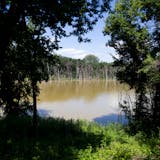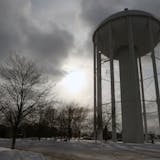Southern Minnesota motorists know the stretch of road well.
Right where the Jolly Green Giant billboard stands grinning on a hillside, U.S. Hwy. 169 dips from the prairie down into the wooded lowlands below Le Sueur.
Unlike vast stretches of the farm-rich region, the highway here bellies up to the undulating blue ribbon of the Minnesota River, which, during wet months, can rise nearly to motorists’ eye level.
It’s both natural marvel and foe. Tornadoes whip through the valley. Ice can cake narrow roadways. And then there’s the rain, which can swell this seemingly tamed waterway into a monster roaming up into the hills.
Over the years, the Minnesota River (and nearby roadways) have flooded often. The years are like notches on a doorway: 1965, 1993, 2019.
As often, stretches of Hwy. 169 north from Mankato and St. Peter downstream through Le Sueur and near Henderson have been closed.
Earlier this century, state officials poured millions into Hwy. 169, including renovating a steel bridge that spans south-central Minnesota’s mightiest waterway outside Le Sueur.
The hope was that the roadway could withstand even a once-in-a-century flood. Emergency vehicles, grain trucks and visitors from the Twin Cities might then avoid detours or cancelled trips.


